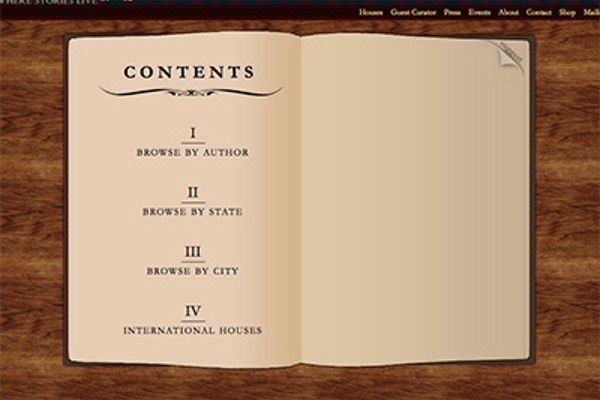Where Do Writers Live?
By Angelica Gonzalez, WTP Editorial Assistant
 At the end of August, the internet was buzzing with the news of I, Too, Arts Collective, an organization rallying to turn the now-vacant home of Langston Hughes into an artists’ haven. The former homes of literary icons can have a profound—even religious—effect on writers and readers alike. A.N. Devers noticed this singular relationship and, with Writers’ Houses, created an all-encompassing database of these houses for readers, writers, and “literary pilgrims” around the country and globe.
At the end of August, the internet was buzzing with the news of I, Too, Arts Collective, an organization rallying to turn the now-vacant home of Langston Hughes into an artists’ haven. The former homes of literary icons can have a profound—even religious—effect on writers and readers alike. A.N. Devers noticed this singular relationship and, with Writers’ Houses, created an all-encompassing database of these houses for readers, writers, and “literary pilgrims” around the country and globe.
The website actually is currently inactive, but it remains a vital resource, with already over 130 houses in its database. The record of houses is searchable in numerous ways, by author, state, or city, on an aptly titled “contents” page:

The website’s true draw comes from its contributors. Each listing contains its own kind of guestbook, where people who have actually visited these houses can leave their comments. These “guest curators,” such as Kurt Vonnegut’s biographer visiting West Barnstable, contribute to the website a lovely combination of travel literature, memoir, and academic writing.
I was delighted to find that one of these guest curators left comments about a long-time favorite poet of mine, Edna St. Vincent Millay. Megan Mayhew Bergman, a former fellow from the Millay Colony for the Arts, writes about her experience visiting Millay’s house, Steepletop, over the course of two separate posts. Bergman nicely conveys Millay’s sense of humor, pointing out the sign she hung encouraging silence in her personal library–a room no one beside herself was allowed to enter. In another post, “Enter at Your Own Risk: Millay’s Inner Sanctum,” she details her own exploration of Millay’s bedroom, office, and personal library. Millay’s inner dwellings feature a portrait of Keats, a custom suitcase, and—to my own amusement— monogrammed towels:

Beyond such detailing of actual house contents, these narratives are enriched by the personal reflections of these curators meandering through the rooms of bygone-but-revered writers. Posing conjecture regarding the poet’s lifestyle, Bergman muses: “I can imagine [Millay} working here, propped on pillows, fire blazing.” And aptly designed links to other narratives smartly tempt you to dig deeper into the site. From Millay’s page we can easily hop over to Flannery O’Connor’s house:

Such posts add delight to what could have been solely an informational database. They truly encapsulate Devers’s original mission to create literary pilgrims. My disappointment at the website’s dormancy motivated me to contact Devers–the project will be re-launched, although it is too soon to say when. Readers themselves will be, as they were in the past, encouraged to submit their own writing, to further this pilgrimage among the website’s entire community. This site is not only delightful, but also timeless: it is a unique means of furthering the preservation of these old houses beyond their original aging structures. A website worthy of a bookmark, for both book lovers and writers. To stay informed about future posts, you can follower them on Twitter.
Copyright 2016 Woven Tale Press LLC. All Rights Reserved.

